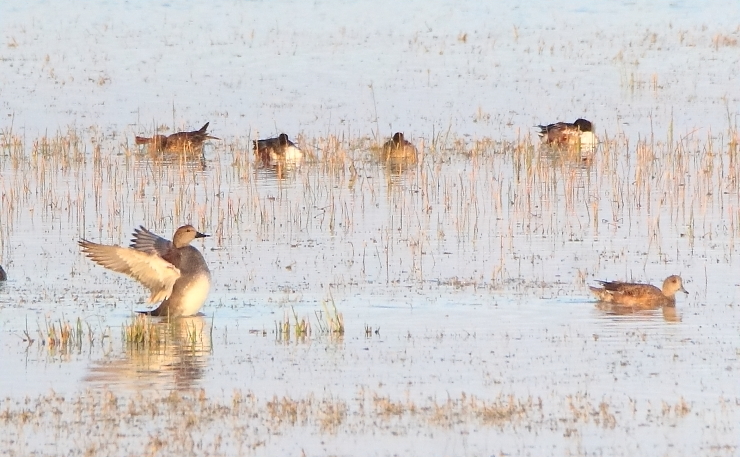
I can’t resist loving my first week of birding each year. While I can’t convince myself to be excited about my First-Of-Year House Sparrows, almost anything else is exciting. Just today (Saturday) I got to celebrate a Cooper’s Hawk, Berylline Hummingbird, and Lesser Goldfinch — common birds all, but still great when they are FOY.
This year, I had the extra satisfaction of going to Lake Cuitzeo for my first outing. In most years, that wouldn’t be all that special — the lake is normally where I can see the most species in a single day, so I usually go there first. But last year, I did not go to the lake first, because there was no lake. Lake Cuitzeo had dried up because of extreme drought. But the rains were good last summer, so back to my lake I go.
I also had the privilege of taking my friend Nacho with me. Although he is a biologist, he is rather new to birding, and had never done so in an area packed with waterfowl and shorebirds. So, while Nacho regularly teaches me about our area’s plants, I got to share with him the delights of distinguishing between Least and Western Sandpipers.
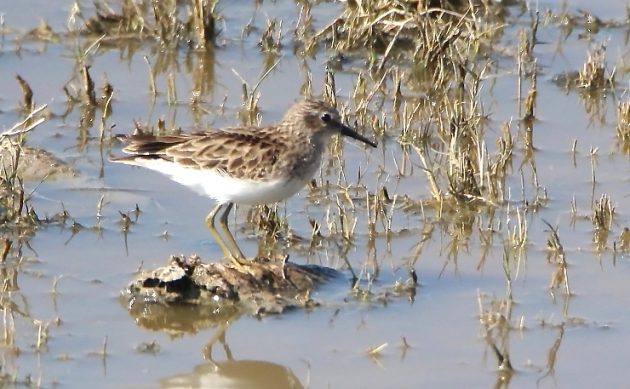
Yellow legs, a comparatively thin bill: Least Sandpiper
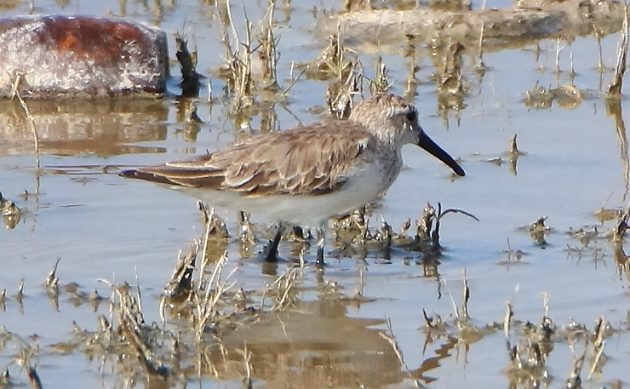
Black legs, a thicker bill with a rather bulbous base: Western Sandpiper. (These photos exaggerate the size difference between the two species, which is actually so minimal as to be almost useless for ID purposes.)
I like to think he also benefitted from the years that it took for me to learn that many of the Long-billed Dowitchers I had seen at the lake over the years were actually Stilt Sandpipers.
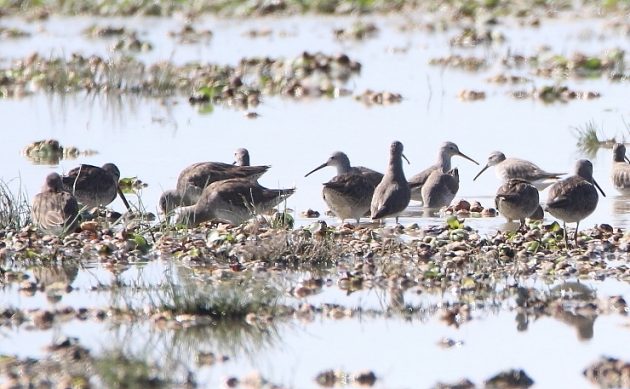
The beefier birds with lightly striped flanks and heavy straight bills are Dowitchers, while the Stilt Sandpipers in this photo were kind enough to give us a full view of their thinner, slightly curved bills.
I also believed, for years, that the white-breasted swallows common at the lake each winter were all Violet-green Swallows. Some, indeed, are. But a couple of years ago I discovered that many are Tree Swallows. I was able to get enough photos in flight of this day’s swallows to confirm that they were all of this second species.
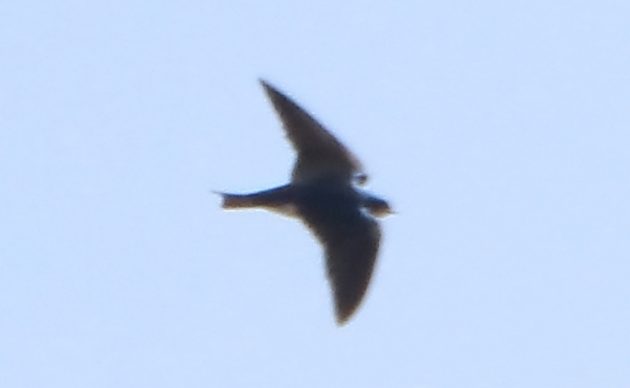
Photographing swallows on the wing is a thankless job. But this photo is just good enough to show a total lack of white on the bird’s rump, confirming that it, and all its companions, were Tree Swallows rather than Violet-green Swallows.
We had a nice collection of birds of prey for the day. There weren’t any Red-tailed Hawks. (I can’t believe I have made it through the first twelve days of the year without seeing any Red-tailed Hawks.) But I’ll trade Red-taileds any day for a Northern Harrier, a lovely pair of Peregrine Falcons, and the surprising presence of a pair of Crested Caracaras, normally seen at much lower elevations.
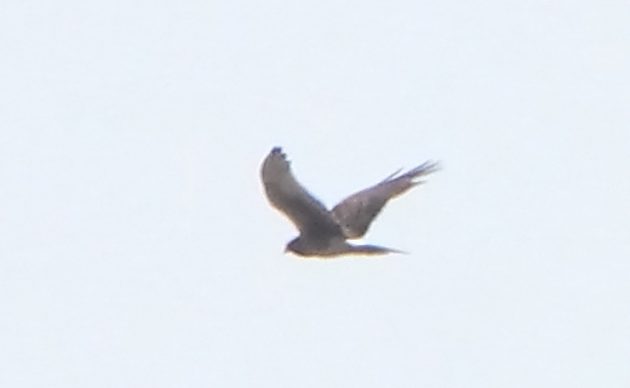
A very distant Harrier
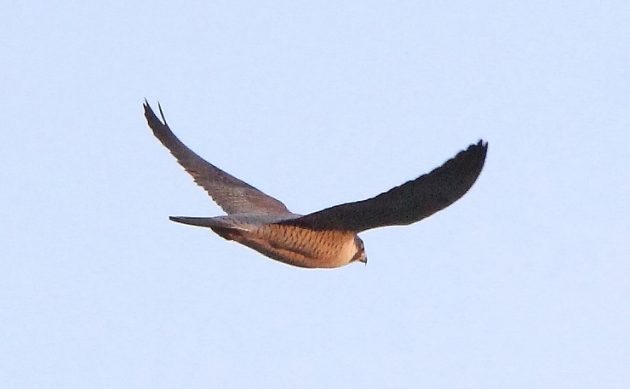
A wonderfully close Peregrine Falcon
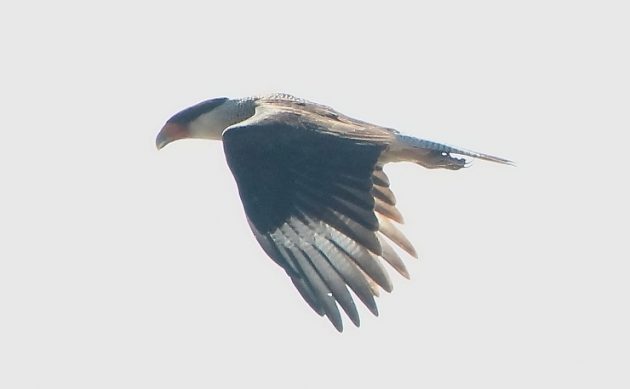
An equally close Crested Caracara. Believe it or not, Caracaras (in spite of their 4-foot wingspan) are falcons, not hawks.
In spite of their many species (migratory Blue-winged, Green-winged, and Cinnamon Teals, Northern Shovelers and Northern Pintails, American Wigeons and Gadwalls; as well as resident Mexican and Ruddy Ducks), the winter ducks of Lake Cuitzeo do not present great identification challenges. This Green-winged Teal spoke for himself — quite literally.
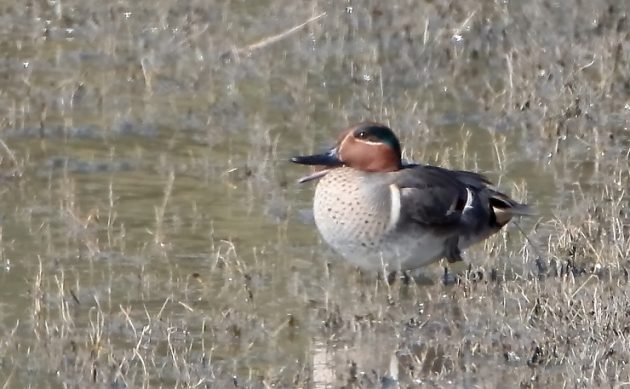
We also encountered a nice endemic Aztec Rail, too distant for decent photos, and a surprising number of Soras. I’d would love to know if any of our readers have insight into the behavior of one Sora. In spite of being a winter migrant, which only reproduces in the U.S. and Canada, it had apparently discovered an abandoned nest, on which it was clearly showing nesting behavior. In spite of our proximity, it spent a good while positioned as if it had eggs there. Was it practicing?
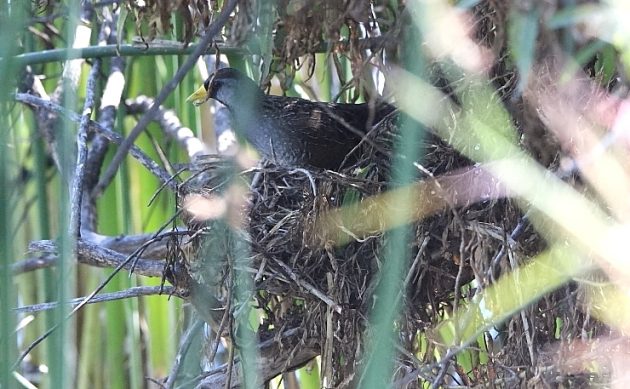
Nacho was particularly enthusiastic about his first sighting of Cactus Wrens. He has lots of experience with its close relative in Morelia, the endemic Spotted Wren. But you drive a half hour north and across the lake, and suddenly you are in the territory of the Cactus Wren, a classic bird of the Sonoran desert. One particularly bold couple gave us quite a show.
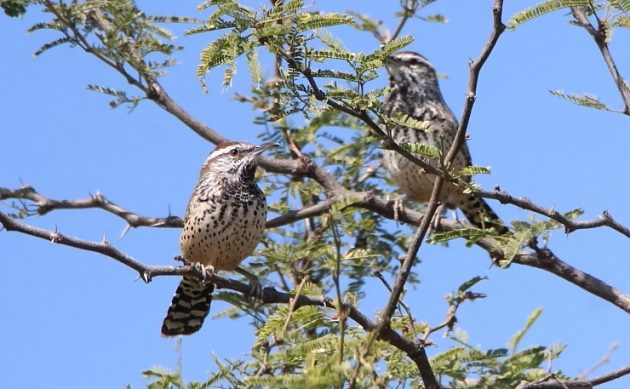
He was also quite taken with the Clark’s Grebes, one of which gave us an unusually close view of that wonderful red eye.
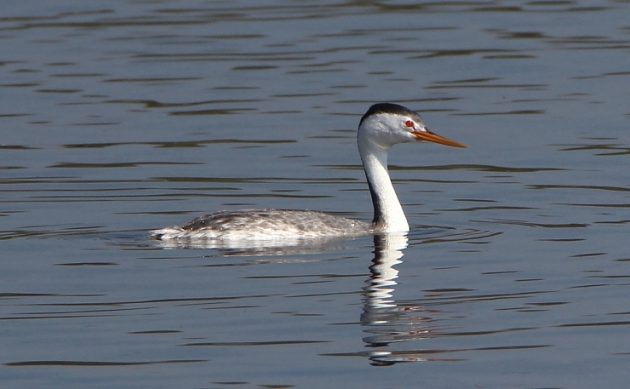
We certainly couldn’t complain about the day’s total of 81 species. That number was a bit better than my first-day total from 2019, though a bit worse than 2020’s total. But it sure beat the 41 species I saw last year, when the lake was dry. And the Aztec Rail and Peregrine Falcons were birds I might not see in a given year, as were, arguably, the Tree Swallows. So, as they say here in Mexico, we got out of bed on the right side!











Leave a Comment